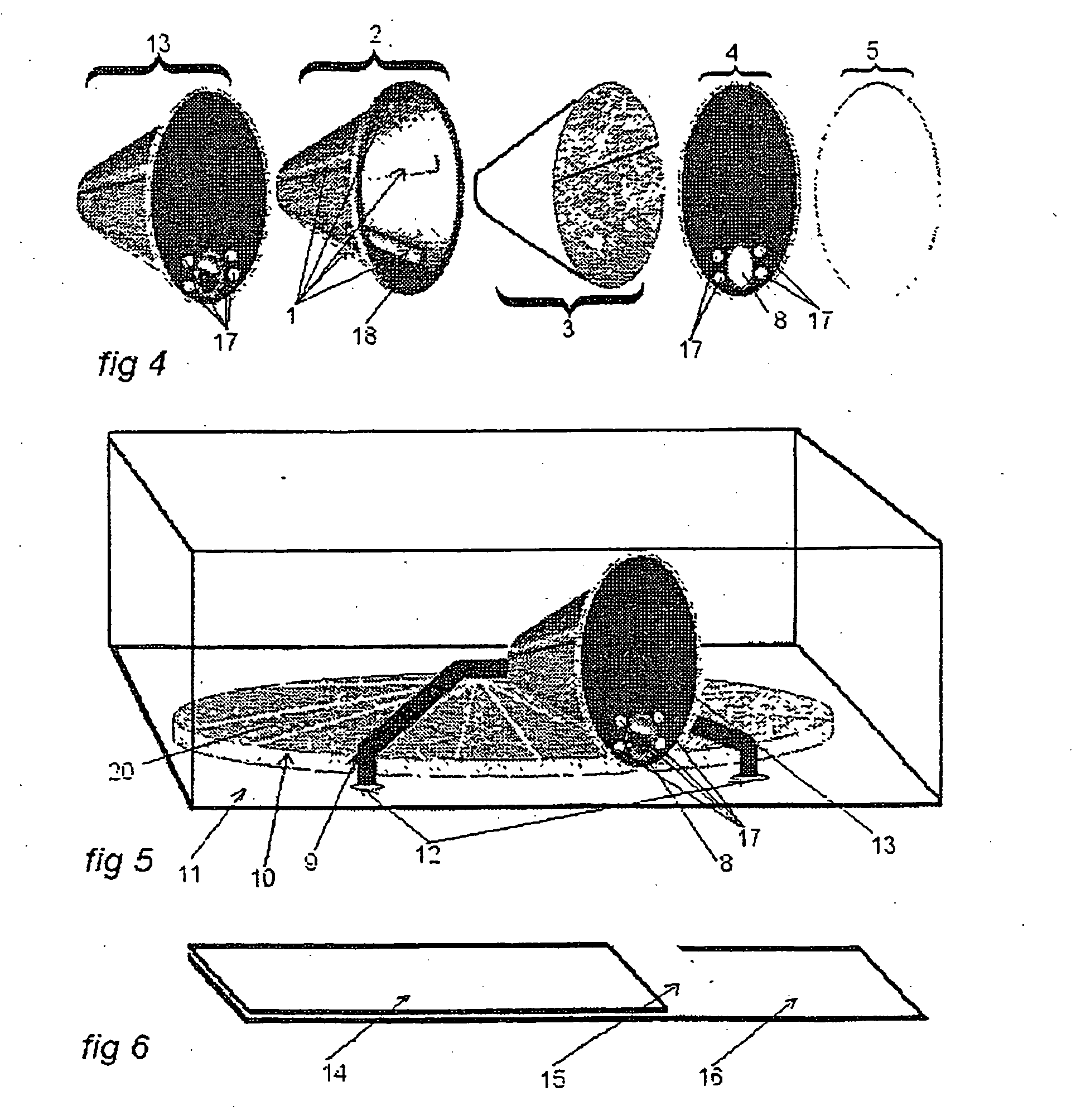Roasting coffee beans
a technology for roasting coffee beans and coffee beans, applied in the field of roasting coffee beans, can solve the problems of high restrictive filtering, high percentage of roasting, and swelling of roasting, and achieve the effects of preventing scorching, precise temperature generation, and visual assessment of roasting degr
- Summary
- Abstract
- Description
- Claims
- Application Information
AI Technical Summary
Benefits of technology
Problems solved by technology
Method used
Image
Examples
Embodiment Construction
[0015] Hereinafter, this invention will be described in detail with reference to the drawings. As illustrated in FIGS. 1-6 the present invention comprises a cartridge (13) that is made of a semi-porous material that in the preferred embodiment will be pulp formed paper. The cartridge may be conical, cylindrical, or spherical in shape and will contain reassesses (1) for the purpose of supplying an air gap for the susceptor laminate (2). The susceptor laminate (2) is formed from flat sheet and is die cut into a semi circle to allow the placement of the laminate into the body of the cartridge (13) and is not affixed in any manner. The susceptor laminate (2) is composed of 3 layers as shown in FIG. 6 the outer layers (14) and (16) are preferably Kraft paper or any zero acid neutral pH paper and is laminated to the susceptor film 15 using adhesive that is approved for food contact. The susceptor (15) is a comprised of a printed dipole antenna or a thin film conductor on a polyester subst...
PUM
 Login to View More
Login to View More Abstract
Description
Claims
Application Information
 Login to View More
Login to View More - R&D
- Intellectual Property
- Life Sciences
- Materials
- Tech Scout
- Unparalleled Data Quality
- Higher Quality Content
- 60% Fewer Hallucinations
Browse by: Latest US Patents, China's latest patents, Technical Efficacy Thesaurus, Application Domain, Technology Topic, Popular Technical Reports.
© 2025 PatSnap. All rights reserved.Legal|Privacy policy|Modern Slavery Act Transparency Statement|Sitemap|About US| Contact US: help@patsnap.com


